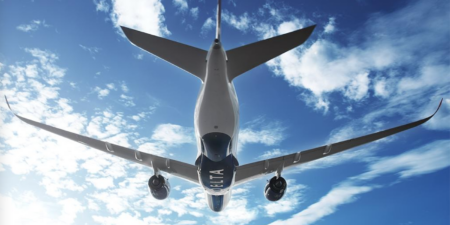September 15, 2015 – Airbus has officially inaugurated operations at its first ever US manufacturing facility, located in Mobile, Alabama. More than 250 Airbus manufacturing employees will work at the US$600m plant, assembling A319s, A320s and A321s.
“Our commercial aircraft production in Mobile signifies two things: that Airbus has become the first truly global aircraft manufacturer, and that Airbus is now also a truly American manufacturer,” said Airbus President and CEO Fabrice Brégier at the event. “With the addition of our US facility to our production network in Europe and Asia, we have strategically expanded our worldwide industrial base.”
“The Airbus US manufacturing facility is an important step forward in Airbus’ strategy, strengthening our position as a leader and competitor in all of our key markets,” Brégier continued. “It enables us to grow our already significant presence in America – the largest single-aisle aircraft market in the world – and to be closer to our US customers and key supplier partners. At the same time, the expanded industrial capacity gives us more flexibility to increase production across Airbus to meet global demand. The US facility is good news for the overall Airbus enterprise, as this greater production capacity creates global growth opportunities across the company and throughout our supply chain.”
Airbus announced plans for the facility in 2012, and construction began at the Mobile Aeroplex at Brookley the following year. The first US-made Airbus commercial aircraft – an A321 – is scheduled for delivery next spring. By 2018, the facility will produce between 40 and 50 single-aisle aircraft per year. Airbus’ market forecast indicates a demand over the next 20 years (from all manufacturers) for 4,700 single-aisle aircraft in North America alone.
We asked Professor Christophe Benaroya, director of the aerospace MBA program at Toulouse Business School in France for his view on Airbus’s move into the US, and he said the facility is of the utmost importance for four major strategic reasons:
1. Making a real and visible Airbus’ footprint in the USA, which remains the biggest aerospace market worldwide (4,800 civil aircraft in the next 20 years)
2. Strengthening the link and working even more closely with OEM leaders located in the USA
3. Becoming a global player, making it possible to better manage Euro/USD fluctuations
4. Last, but not least, this US-reinforced presence will contribute to enhance Airbus Group business beyond civil aircraft (helicopters, space…). It probably will reinforce its role as a prime contractor to the DOD.
“Although the major components are transported to the United States from Europe, it is important to highlight that a significant part of the aircraft manufactured in Europe rely on US components and systems,” Benaroya stated.
So what about the impact in Europe? “While some trade unions might be circumspect regarding this step forward, in the long run it is good news for the industry, which is facing ramp-up issues across several programs. It will certainly bring new business opportunities to European OEM and subcontractors beyond the civil aircraft market.”




